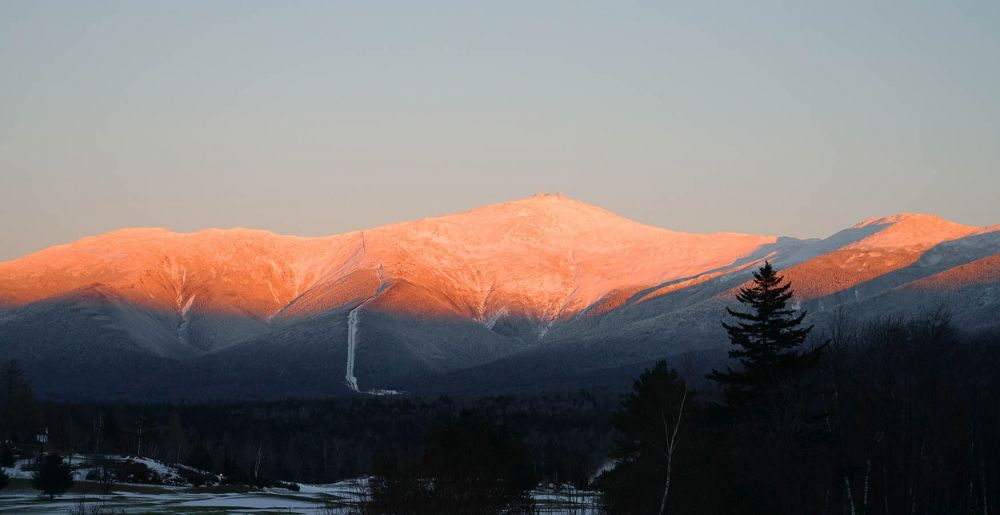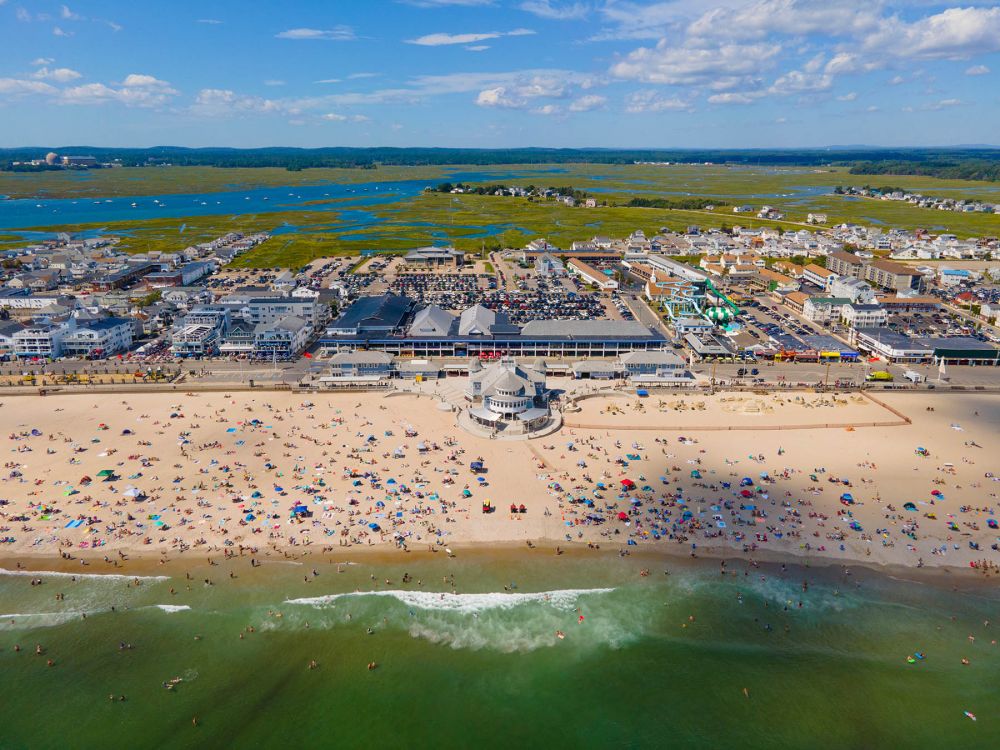 It’s unsurprising, even expected, that tourism took a hit during the pandemic years. Spring of 2020 saw visitor spending plummet. What was surprising, though, was not just that visitor spending rebounded, but that it quickly overshot earlier boom years.
It’s unsurprising, even expected, that tourism took a hit during the pandemic years. Spring of 2020 saw visitor spending plummet. What was surprising, though, was not just that visitor spending rebounded, but that it quickly overshot earlier boom years.
Tourism-related spending in NH approached $2 billion in both the summers of 2018 and 2019, but dropped to $1.4 billion in 2020, according to Dean Runyan Associates. In the summer of 2021, it shot past $2 billion for the first time, and rose to $2.4 billion in 2023. Totals for winter, spring and fall, though not as high as summer, followed similar trends, eclipsing their own seasonal pre-pandemic marks.
More people are coming to visit the state, and they’re spending more, but there are new challenges that come with rising visitation rates. It’s also notable that the statewide numbers are just that: Broad statistics that can overshadow parts of the tourism industry that might still be struggling. For every trend, there are people left out, and that’s true in this case.
The Granite Appeal
“We’ve had year-over-year records coming out of the pandemic. It’s nice to see that,” says Lori Harnois, director of the state’s Division of Travel and Tourism.
New Hampshire had several advantages that set the stage for such a rebound, she says. The state’s natural beauty has always been a draw, and the ability for visitors to find uncrowded experiences proved alluring, especially when many still had concerns about infection.
“People were looking for someplace to go where they were less congested. New Hampshire’s backdrop is great for that,” Harnois says. “The state’s accessibility to major metro areas, within a day’s drive of New York City and much less than that for people coming from Massachusetts, is also a draw.”
Even during the pandemic, the state was actively promoting NH as a place where people could safely explore, Harnois says. Those messages have been paying off. “We do track all of our marketing efforts. We do know that for every dollar that we spend on marketing, we get a $17 return on investment,” Harnois says.
Recent analyses have shown that there’s been more what she calls “multi-generational travel,” meaning grandparents, their adult children, and grandchildren, all coming together to engage in activities they can share, such as ice fishing or hiking. And with the advent of hybrid work, people are able to visit more often, or extend their visits, if they can do a few hours of work from their laptop.
While NH is known for its outdoor experiences, there’s also a growing cultural and commercial category of attractions, Harnois says, such as craft breweries, wineries and distilleries, tax-free shopping, classic New England comfort foods, and restaurants run by James Beard-nominated chefs.
All of this appeals to travelers who want an authentic experience. “Especially travelers who are coming from a great distance, they want to get to know the locals,” Harnois says.
Yet, if too many visitors show up to the same place at the same time, it could ruin that authentic experience. Harnois and her team are trying to shape their marketing to highlight some of the lesser-known destinations and avoid crowding.

The View From The North
The White Mountains saw a “surge” in numbers in 2021, which continued into 2022, says Charyl Reardon, president of the White Mountains Attractions Association. She says those numbers have since stabilized, but at a level still greater than they were pre-pandemic. Summer still remains the busiest season but that interest is strong throughout the year. Notable, she says, are that so-called “shoulder seasons”—quiet periods when visitors wait for the snow to come, or for spring to sprout—have become shorter.
“Consequently, I feel the region has successfully evolved into a year-round destination, providing stability for many in the hospitality industry with ample opportunities for employment throughout all four seasons,” Reardon says.
So far, the region has kept up with demand, though some acute issues have arisen. She cites overcrowding at some of the most popular trailheads, which leads to concerns about effects on the environment. And during the busiest times, the volume has tested the limits of the local roads, parking and other public services.
Fortunately, Reardon says, staffing hasn’t been as much of a concern over the past two years. Federal programs allowing visas for guest workers have re-opened, and the year-round opportunities in hospitality have drawn many retirees back into the workforce. However, there is concern, she says, that a sustained, higher rate of visitation might result in greater year-round costs for those who wish to make the region their home. “I think it’s important for us to continue finding the balance between attracting visitors, facilitating their movement throughout the region, and preserving the quality of life for residents,” Reardon says.
More than Art on the Walls
Not all areas of tourism are experiencing boom times in the state. At The Currier Museum, attendance is still behind pre-pandemic rates, says Karen Graham, interim executive director and COO. She says the latest figures show they’re about 80% to 85% of where they were in 2019, though that’s good compared to the rest of the museum industry, which has been slow to rebound. In fact, this year saw two museums close in the Seacoast: the University of NH shuttered its Museum of Art and the Museum of New Art in Portsmouth suspended operations.
At The Currier, located in Manchester, there’s a broad mix of revenues.
“The museum experience is broader than people coming to look at art on the walls,” Graham says. One revenue line that still hasn’t recovered is large group sales, she says. School groups still haven’t returned, and the museum’s event space rentals were still down in 2023—though reservations are finally looking strong for 2024.
Other areas are well above pre-pandemic totals. Those include sales at the cafe and gift shops, the museum’s wellness programming, and tours of the Frank Lloyd Wright houses. (The Currier
now owns two houses designed by the iconic architect.)
“We do a lot of art and wellness programs. Those are much stronger after the pandemic than they were before. The need is so much stronger now,” Graham says. This is driven by the opioid crisis, teenagers struggling with stress and depression, and people traumatized by military combat. “So many groups were negatively impacted during the pandemic; we’re seeing 30% increase year-over-year,” in their veterans programming, Graham says.
One reason why The Currier has outpaced its peers since the pandemic was due to support from the state government during 2020, she says, which allowed the museum to maintain its full staff. “So, when things got better, we didn’t need to rebuild our staff,” Graham says. “It was a benefit to be operating in New Hampshire during the pandemic.”

Watching the Skies
Museums are not the only ones facing a tough time. Ron Deshaies, owner of Ocean Cycles and Beach Gear Rentals in Hampton Beach, says he’s been a victim of forecasts—both meteorological and financial.
“I’ve been open 30 years, and last year was the worst year we ever had. It rained every weekend,” he says. To make matters worse, his off-season venture involves buying and re-selling used skating and skiing equipment, and the rain dampened demand for those activities for the winter that followed.
Deshaies speculates that the working-class clientele that he targets are feeling concerned about their own financial stability, especially since so many unavoidable costs—groceries, housing, transportation—have been volatile.
“People are holding onto their money,” Deshaies says. “I believe in my business plan, but I don’t trust the economy right now.”
Ocean Cycles used to have two locations on the Seacoast, but one store was flooded and never re-opened. And after seeing the widespread damage to homes and businesses due to tidal flooding last year, Deshaies is considering a career shift. “My parents used to own a franchise doing flood damage,” Deshaies says. “This year, I decided I’m going to get back into it. This last flood that we had on Hampton Beach, if you were in that type of business, flood control or reconstructive carpentry, you’d be doing pretty well.”

 Current Issue - May 2024
Current Issue - May 2024